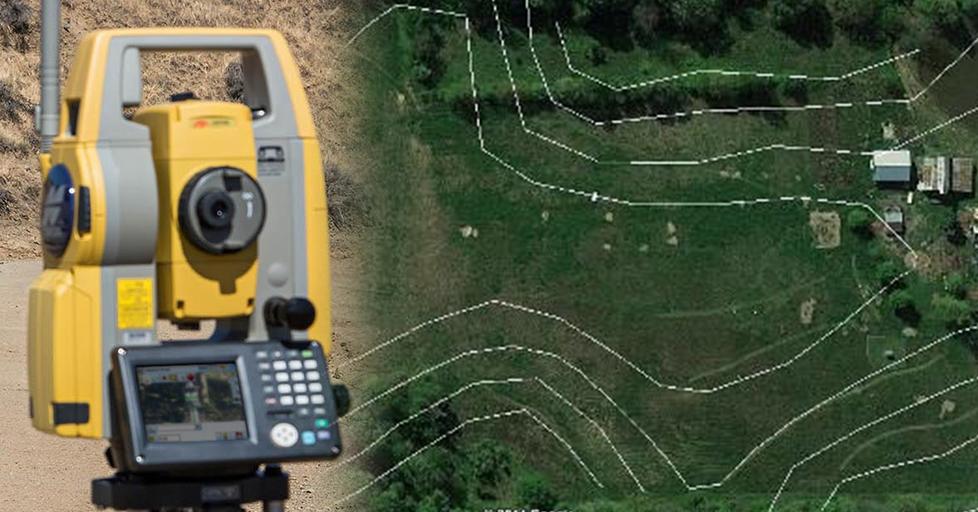Are you curious to know what is contour in surveying? You have come to the right place as I am going to tell you everything about contour in surveying in a very simple explanation. Without further discussion let’s begin to know what is contour in surveying?
In the realm of land surveying and mapping, the concept of “contour lines” holds a pivotal role. Contours are not just artistic lines on a map; they represent the topography of the land, revealing its elevation changes and defining its shape. Contour lines play a crucial role in understanding the lay of the land, designing infrastructure, and making informed decisions about land use. In this blog post, we will delve into the significance of contours in surveying, how they are represented, and their practical applications in various fields.
What Is Contour In Surveying?
Contour lines are imaginary lines drawn on a map that connect points of equal elevation above a reference datum, usually sea level. In other words, they depict the height of the land surface at different locations. Contour lines enable us to visualize the shape and slopes of the land, offering insights into its natural features, such as hills, valleys, and ridges.
Representation Of Contours
Contour lines are typically represented on topographic maps and are characterized by the following aspects:
- Contour Interval: This is the vertical distance between two consecutive contour lines. Smaller intervals indicate steeper terrain, while larger intervals represent gentler slopes.
- Index Contours: These are bold contour lines that are labeled with the elevation. They help users quickly identify major changes in elevation.
- Intermediate Contours: These lines fall between index contours and provide additional detail about the terrain.
- Depression Contours: When contour lines encircle a depression (like a lake or basin), they are marked with tick marks pointing inward to indicate lower elevation.
Practical Applications Of Contours
- Land Development: Contour maps are essential in urban planning, helping architects, engineers, and developers design infrastructure that is compatible with the land’s topography.
- Natural Resource Management: Contours assist in watershed management, soil erosion control, and floodplain mapping, ensuring the sustainable use of natural resources.
- Environmental Impact Assessment: Contours are used to assess the impact of construction projects on the environment, helping minimize disruption to the terrain.
- Civil Engineering: Engineers use contour maps for designing roads, bridges, dams, and other structures to ensure they are structurally sound and appropriately located.
- Agriculture: Farmers utilize contour maps to plan irrigation systems and manage water runoff, preventing soil erosion and promoting efficient water usage.
- Hiking and Outdoor Activities: Contour maps are invaluable for outdoor enthusiasts, hikers, and mountaineers to plan routes, assess difficulty, and navigate the terrain safely.
Conclusion
Contour lines are more than just lines on a map; they are a visual representation of the Earth’s natural features and elevation changes. Through their depiction, contours aid in land development, infrastructure design, environmental conservation, and a wide range of other applications. By understanding the significance of contour lines in surveying, professionals and enthusiasts alike gain the ability to interpret the landscape, make informed decisions, and navigate the complexities of the world around us.
FAQ
What Is Contour In Civil Engineering?
An imaginary line on the ground surface joining the points of equal elevation is known as contour. • In other words, contour is a line in which the ground. surface is intersected by a level surface obtained by joining points of equal elevation. This line on the map represents a contour and is called contour line.
What Are Called Contours?
Contours are imaginary lines joining all the points of equal elevation or altitude above mean sea level. This helps to show the relief features of any region. A contour line is drawn to show places of equal heights. The difference in elevation between successive contour lines are called contour intervals.
What Is Contour And Its Uses?
These contour lines are an important way of showing the rise and fall of the land on a map. Contour lines show all the places that are the same height above sea level. They also tell us about the slope of the land. On a steep slope, the lines are close together.
What Is Contour In Levelling?
The art of determining relative altitudes of points on the surface of the earth of beneath the surface of earth is called LEVELLING. A contour is defined as an imaginary line of constant elevation on the ground surface.
I Have Covered All The Following Queries And Topics In The Above Article
What Is Contour In Surveying
What Is Contour Line In Surveying
What Is Contour Map In Surveying
What Is Contour Interval In Surveying
What Is A Contour In Surveying
What Is A Contour Line In Surveying
What Is Contour Lines In Surveying
What Is Contour Gradient In Surveying
What Is Contour In Surveying
What is contour in surveying?
What are the two methods of contouring?

